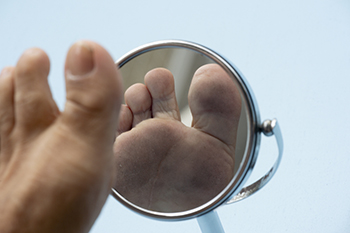 Going shoe shopping can be difficult. There are many factors to consider when purchasing a new pair of shoes. One of the most important factors is the correct size shoe. A quality-made and comfortable shoe should fit your foot properly. Having the right fit can also relieve and prevent certain foot conditions. To find the right size shoe, it is helpful to shop at a brick-and-mortar shoe store. Here, a salesperson can measure your foot and ensure you try on the correct size shoes. It is recommended to go shoe shopping towards the end of the day, when the feet tend to be at their largest due to natural swelling. Buying shoes that fit your feet when they are at their largest, will ensure that they fit comfortably throughout the day. It is also suggested that you wear the socks you intend to wear with the shoes. When you try on the shoes, walk around the store and make sure they feel comfortable. For more tips on how to find the right shoes for you, consult with a chiropodist today.
Going shoe shopping can be difficult. There are many factors to consider when purchasing a new pair of shoes. One of the most important factors is the correct size shoe. A quality-made and comfortable shoe should fit your foot properly. Having the right fit can also relieve and prevent certain foot conditions. To find the right size shoe, it is helpful to shop at a brick-and-mortar shoe store. Here, a salesperson can measure your foot and ensure you try on the correct size shoes. It is recommended to go shoe shopping towards the end of the day, when the feet tend to be at their largest due to natural swelling. Buying shoes that fit your feet when they are at their largest, will ensure that they fit comfortably throughout the day. It is also suggested that you wear the socks you intend to wear with the shoes. When you try on the shoes, walk around the store and make sure they feel comfortable. For more tips on how to find the right shoes for you, consult with a chiropodist today.
Finding the right shoes for you can ensure your comfort and help maintain proper foot health. If you suffer from foot pain and need help finding the right shoes for you, please consult with one of the chiropodists from The Footcare Centre. Our chiropodists will assess your condition and provide you with quality foot and ankle treatment.
Tips to Find Great Shoes
Finding shoes that are well-fitting, supportive, and comfortable can be key in maintaining your overall foot health, but can sometimes seem like a monumental task.
Here are some tips and tricks to keep in mind when shopping for shoes.
Shop in a brick and mortar store - Your shoe size can change throughout your lifetime. You will be able to try on shoes before you buy them to ensure a proper fit. A salesperson can also provide recommendations on what shoes best serve your specific needs.
Try shoes on at the end of the day - Your feet swell throughout the day. By trying shoes on in the evening when the feet are at their largest, you ensure a good fit and shoes that are comfortable all day.
Have your feet measured - Find the right fit by having your feet measured at the shoe store. A salesperson can help by measuring both feet with a Brannock device to determine your true size.
Opt for comfort and support - Some shoes, such as high heels and flip flops, may look great but can cause damage to the feet over time. Look for shoes that have a low heel, adequate arch support, a wide toe box, and are made of breathable materials.
If you have any questions, please feel free to contact our office located in . We offer the newest diagnostic and treatment technologies for all your foot care needs.
 Bunions
Bunions
 Poor wound healing
Poor wound healing
